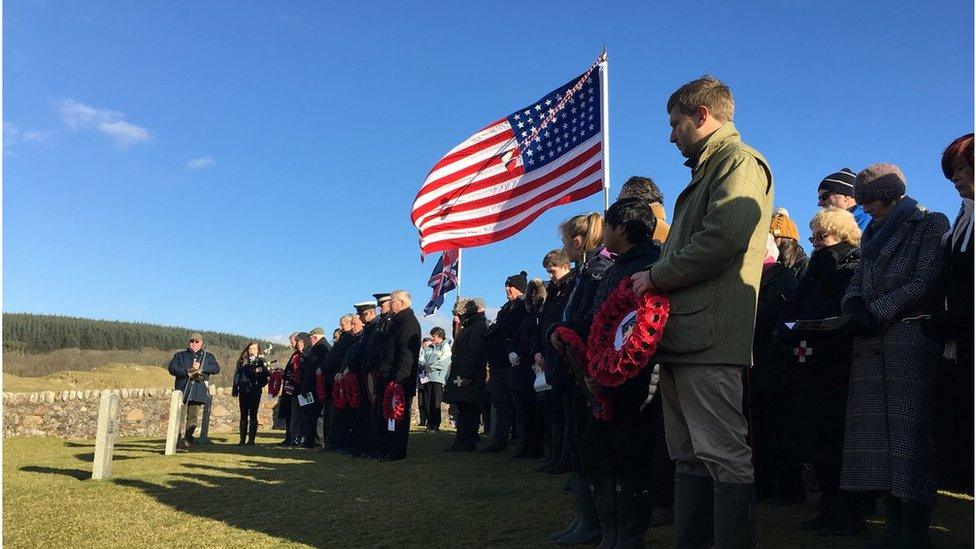Ceremonies remember Islay war dead
- Published
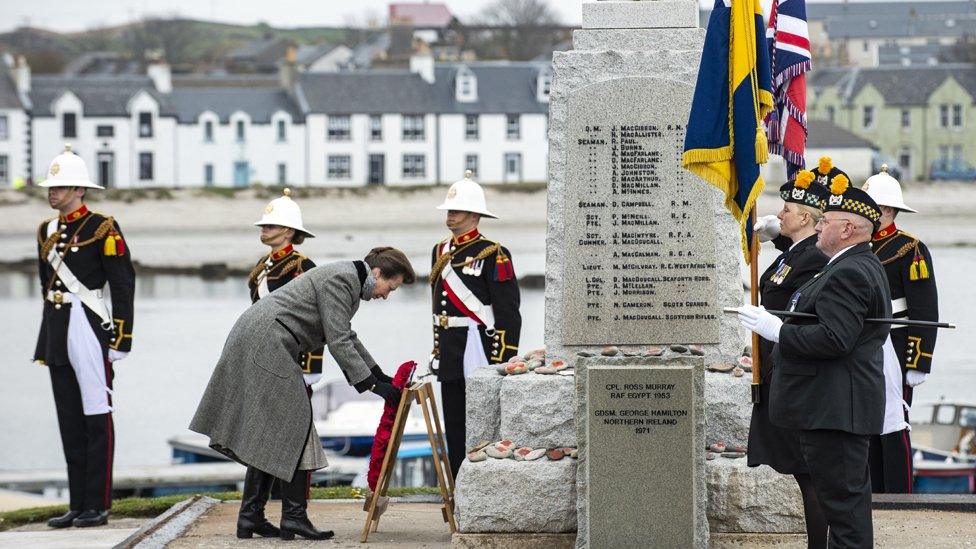
Commemorations have taken place to remember the 700 men who died in two World War One disasters off Islay.
Princess Anne laid a wreath at a service to mark 100 years since the tragedies, while warships from Britain, America, France and Germany gathered over the wreck of a ship.
More than 200 US soldiers died when the Tuscania was torpedoed by a German U-boat off Islay in February in 1918.
Eight months later, the Otranto went down after a collision in a storm.
A ceremony took place on board Royal Navy patrol boat HMS Raider over the wreck of SS Tuscania.
HMS Raider was joined by warships HMS Montrose, America ship USS Ross, the French FS Andromede and the German FGS Lubeck for the service.
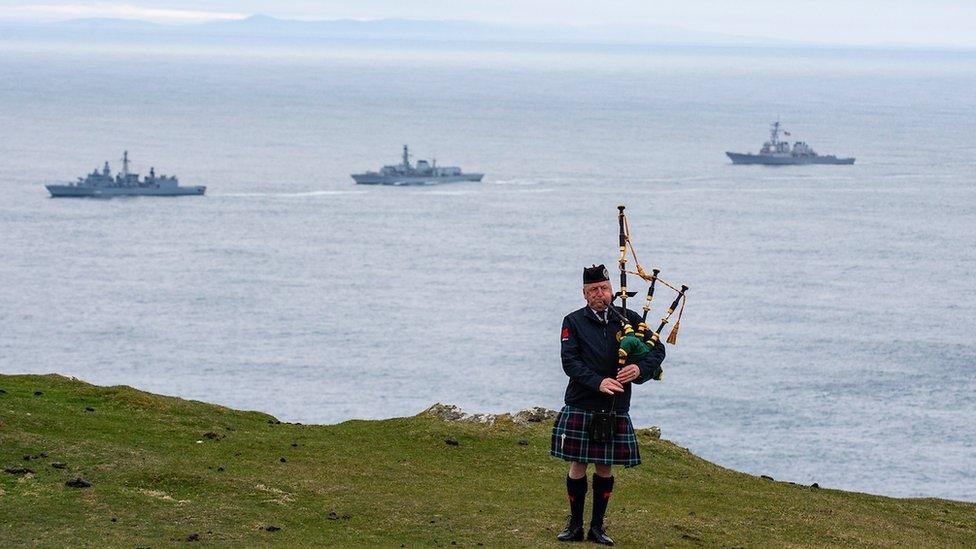
The ships were the backdrop to WW100 Scotland National Day of Remembrance commemorative services being held on the island.
These were attended by Princess Anne, Scottish and UK government ministers, the US and German Ambassadors and American descendents of those who survived these twin tragedies.
Culture Secretary Fiona Hyslop said: "We all reflect on the tremendous resilience shown by the people of Islay and Jura, particularly the compassion they showed to the American troops and British crewmen caught up in the sinkings of the Tuscania and Otranto.
"The way the islanders coped with these tragedies was truly remarkable, and the legacy it leaves today is reflected in the international representation we have seen during these commemorations.
"I am confident this is a story that will continue to be told long after this centenary."
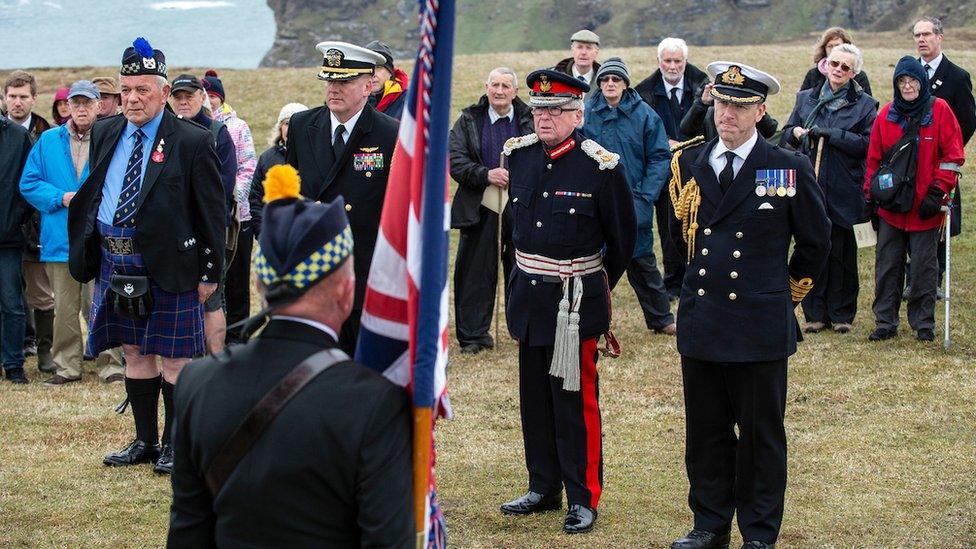
A service also took place at the Mull of Oa
Scottish Secretary David Mundell said: "It is right and fitting that, 100 years on, we reflect on the terrible loss of these two vessels, with such enormous loss of life, off the coast of Islay.
"Many thousands of American and British servicemen lost their lives protecting Europe against fascism, and they have our enormous gratitude. That loss was felt keenly on Islay, where every family in every village lost brothers, fathers and sons in the conflict. We must never forget their service and their sacrifice."
US Ambassador Robert Wood Johnson added: "It is humbling to come to Islay to honour the soldiers and sailors who lost their lives here in the service of our nation.
"The American people will always remember their great sacrifice, just as we will always remember the solidarity of the people of Islay who stood beside us in that time of tragedy."
How the tragedy of World War One came to Islay's shores
In the final year of WW1 the tiny island had already lost 150 of its 6,000 population during the conflict on the Western Front.
But in February 1918, the carnage came to the shores of Islay, when the Tuscania was sunk by a German U-boat.
Then in October, just weeks before the end of the war, the SS Otranto went down after an error by another ship ripped a huge gash in its hull.
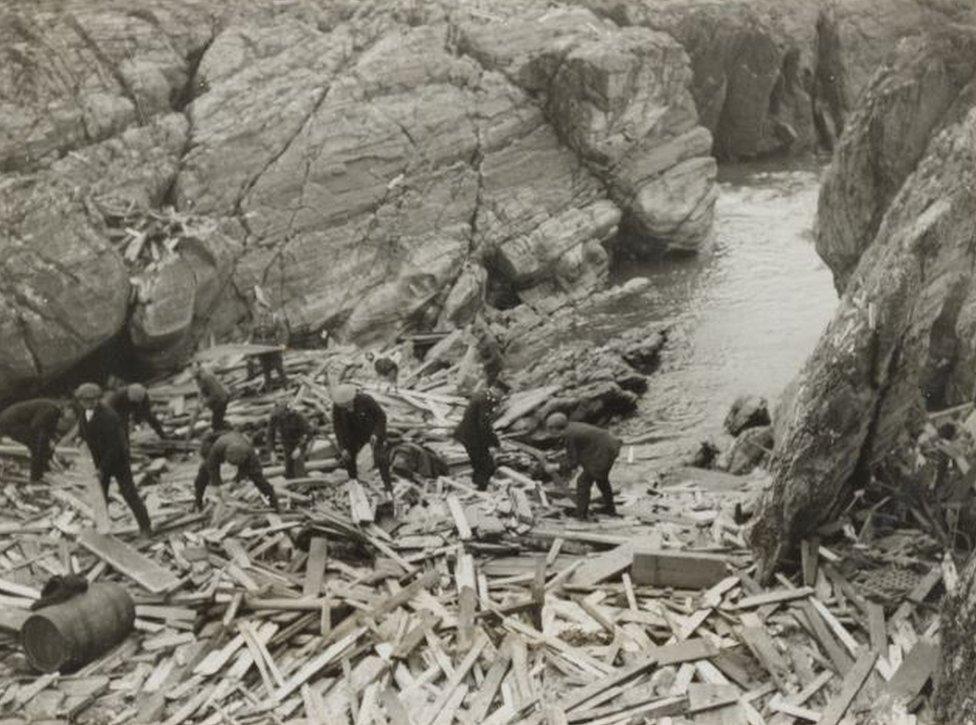
Searching in the wreckage for bodies of victims of the US troopship Otranto

The Tuscania was carrying almost 2,500 US soldiers and, while many were rescued, more than 200 died.
Islanders recovered and buried hundreds of bodies and cared for those who had survived.
The islanders hastily organised a mass funeral for the men who were washed up on their shore but realised there was no American flag to fly over their graves.
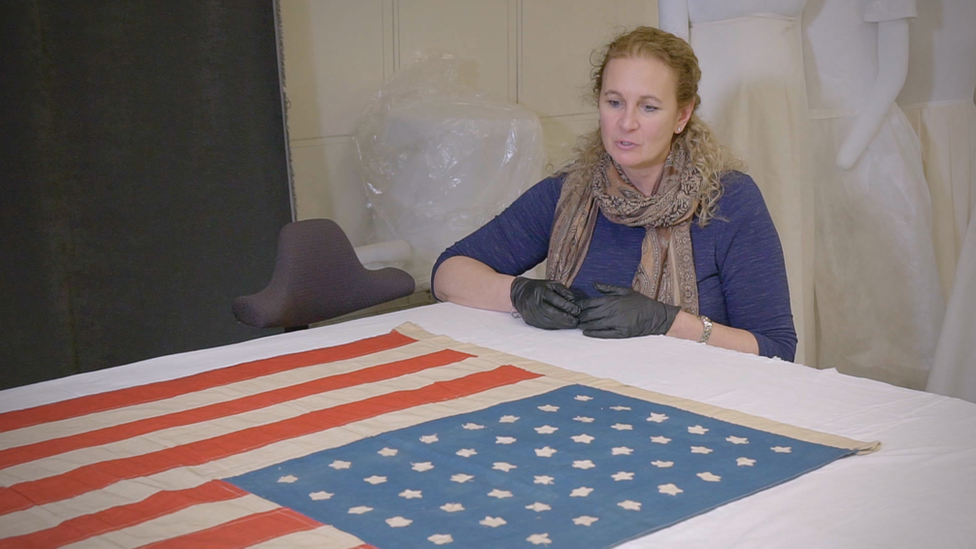
The US flag made by Islay locals is in the Smithsonian Institution in Washington DC
So a small group of islanders decided to make their own Stars and Stripes and stayed up into the night to finish it.
That flag was gifted to US president Woodrow Wilson who deposited it in the Smithsonian in Washington DC, where it has been carefully preserved for 100 years.
Jennifer Jones from the museum said: "It looks very beautiful and it is still a well-made flag, even though it was made very quickly."
Ms Jones said she was impressed by the care shown by islanders to the Americans who died off their coast.
"The fact that they so lovingly cared for the soldiers and cared to make sure they had the proper burial and had the proper flag shows that it was very heartfelt," she said.
"People went out of their way to respect those who had recently lost their lives."
The flag will be on display at the museum of Islay Life.
- Published1 May 2018
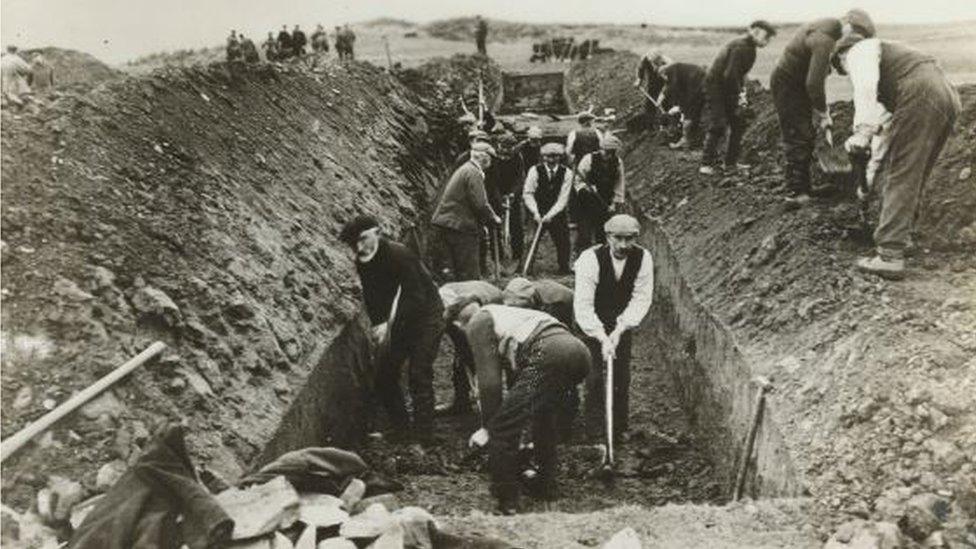
- Published5 February 2018
